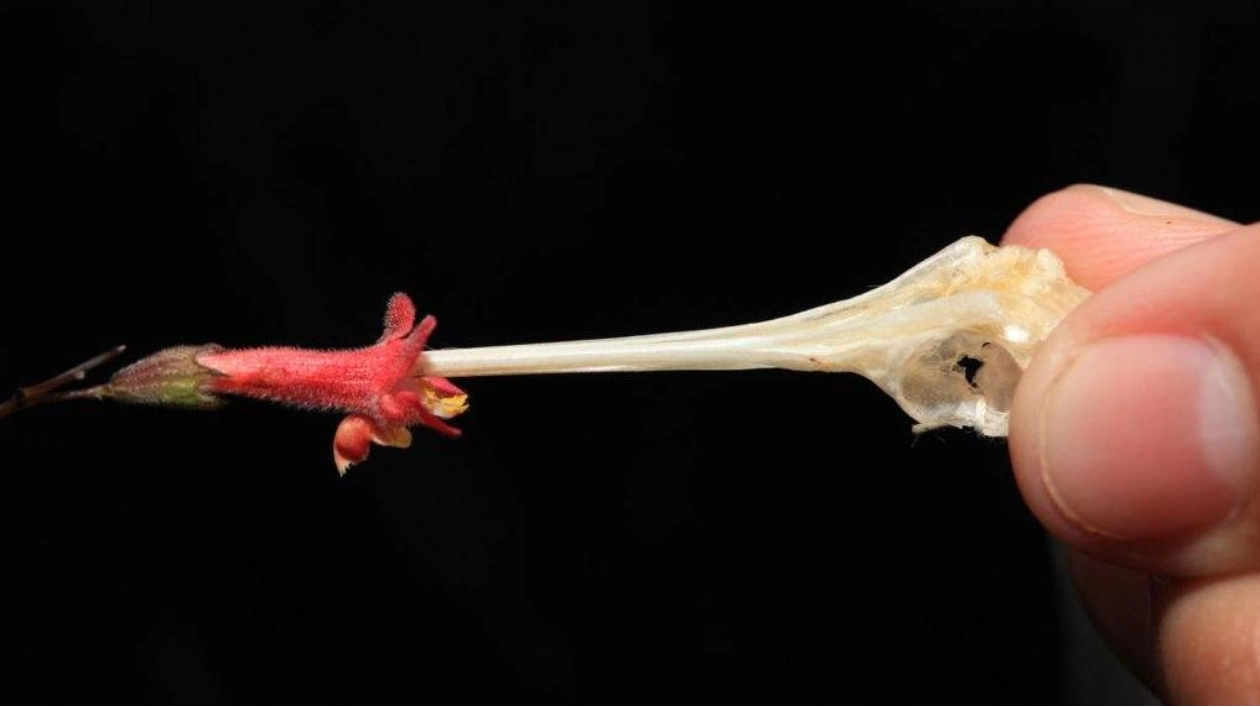Certain flowers might be employing their pollinators as arenas for sexual competition. Red, Brazilian flowers known as Hypenea macrantha utilize explosive bursts of pollen to dislodge rival pollen from hummingbirds' beaks and replace it with their own, according to a study published in the American Naturalist. If a male flower can ensure that a hummingbird leaves with more of its pollen and less of its competitors', it enhances its likelihood of fertilizing seeds in the next female flower the bird visits.
Science News is gathering reader inquiries about navigating our planet's evolving climate. What do you wish to know about extreme heat and its potential to trigger extreme weather events? H. macrantha flowers possess both male and female reproductive organs. To prevent self-fertilization, individual flowers transition through a male phase followed by a female phase. They depend on hummingbirds for pollen transfer, enticing the birds with sweet nectar rewards. When a hummingbird visits a flower in its male phase, its beak activates a catapult-like mechanism that ejects all the pollen from a petal-covered compartment in a single burst. Subsequently, the flower shifts to its female phase.
To determine if the explosive pollen displaced competing pollen, evolutionary ecologist Bruce Anderson and his team simulated hummingbird visits by inserting a hummingbird skull into flowers. They tagged pollen with tiny fluorescent particles and applied the fluorescent pollen to the beak area where pollen typically accumulates. Next, they introduced the beak, laden with fluorescent pollen, into fresh sets of male and female flowers and tracked the distribution of marked and unmarked pollen particles. The hummingbird beaks shed twice as much fluorescent pollen when inserted into explosive males compared to inert, already-exploded flowers. Furthermore, the more fluorescent pollen an explosion removed, the more effective that explosion was at depositing the flower's own pollen onto the beak. High-speed video revealed that pollen grains from exploding flowers acted like missiles, dislodging existing pollen.
"It's almost as if there's a division of labor for pollen. Some is intended for mating, and some for combat," says Anderson, from Stellenbosch University in South Africa. More research is required to ascertain whether the pollen blasts lead to increased offspring for male flowers. The animal kingdom is replete with males attempting to eliminate rivals' sperm and replace it with their own. For instance, many animal penises feature intricate shapes designed to scoop sperm out of females' reproductive tracts. Even the human penis shape may have evolved to remove other men's sperm, as evolutionary psychologist Rebecca Burch and her colleagues have demonstrated. This marks the first experimental evidence of a comparable sperm-removal strategy in plants.
"Plants are not merely stationary objects," says Burch, from the State University of New York at Oswego. "They engage in communication, competition, and now active reproductive sabotage of other plants." Questions or comments on this article? E-mail us at feedback@sciencenews.org | Reprints FAQ B. Anderson et al. Pollen wars: Explosive pollination removes pollen deposited from previously visited flowers. The American Naturalist, in press, 2024. doi: 10.1086/732797. G.G. Gallup Jr. et al. The human penis as a semen displacement device. Evolution and Human Behavior. Vol. 24, July 2003, p. 277. doi: 10.1016/S1090-5138(03)00016-3.
We are at a pivotal moment, and supporting climate journalism is more crucial than ever. Science News and our parent organization, the Society for Science, need your assistance to bolster environmental literacy and ensure our response to climate change is grounded in science.
Please subscribe to Science News and contribute $16 to expand science literacy and understanding.






